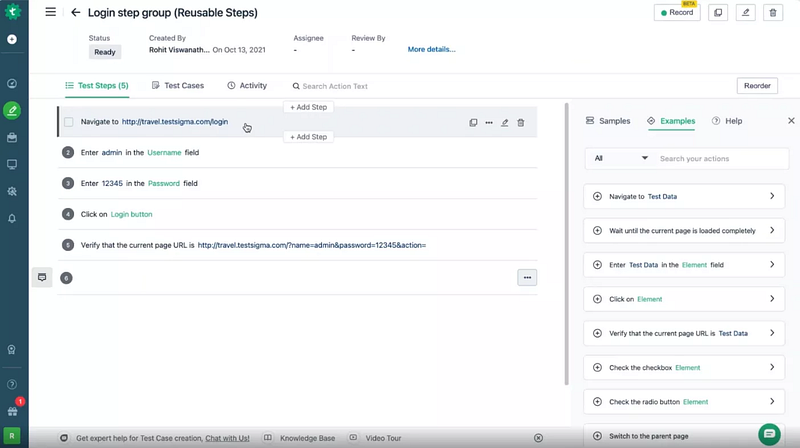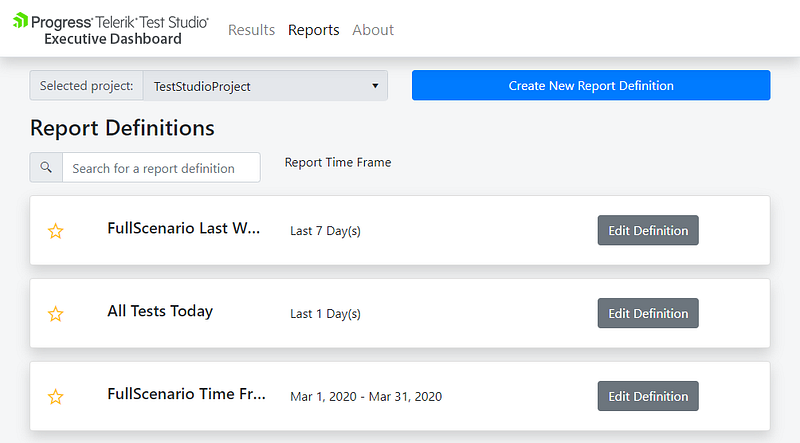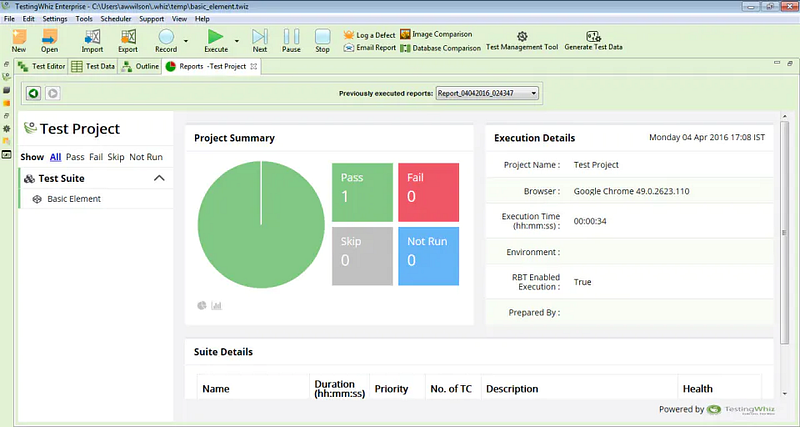Today, software developers have no option but to provide a software application near perfection. Automation is a great way to expand operations and save time and money. All the repetitive testing tasks that take a long time and are challenging to complete manually are automated using automated software tools. On the other hand, manual testing necessitates a trained human’s precise execution of test actions.
As a result, automation testing expands the number of tests on a software program. Also, automation testing tools automatically examine software products’ test cases and anticipated outcomes.
Also, it’s important to note that using the appropriate automation tools at the correct times is crucial for producing high-quality products quickly.
Why Do We Need Automation Testing?
· Automated tests are much quicker than manual tests and can minimize costs & time to execute repeatitive tests.
· Automated testing can expand the scope and coverage of tests to raise the software’s quality.
· It can examine an application’s internal programs, code, data tables, and file to check if it functions as intended.
· It can easily execute hundreds of complicated test cases, giving test coverage that is not achievable with manual tests.
· Automated tests carry out the same processes as manual testing and never forget to capture detailed results. The time saved from not having to repeat tests manually allows testers to develop new test cases and work with complicated features.
· Developers can utilize shared automated tests to find issues before forwarding them to QA. Tests are run when source code changes are checked in; if failed, th team or developer is notified.
Advantages of Using Automation Testing
Some of the significant benefits of test automation are listed below:
· Increased Precision
Automation testing offers greater precision than human testing. Minor errors may occur during manual testing, even if it’s performed by a skilled individual.
Automation tools generate more accurate test cases. Besides, it ensures that no single defect or error goes into production.
· Enhanced Test Coverage
Manual testing can be difficult and time-consuming when executing extensive test cases. However, because automated testing is faster, it can complete lengthy tests in a short period.
Also, test automation allows for the execution of additional tests. The features of a software product are tested using more test cases to ensure that they meet the highest quality requirements.
· Early Detection of Bugs
In a software application’s development, automation tools help find bugs or other flaws. Later, the time and money needed to fix defects are significantly reduced when they are discovered early on.
Test automation offers quicker feedback. It also provides input for every run of a test case. That is why it gets simpler to find issues throughout the SDLC process.
· Cost-effective
Repeated test case execution is not possible in manual testing due to increased costs. On the other hand, test scripts created by automation tools can be utilized repeatedly, which saves money in the long run.
· High Performance for Apps
Automation testing can provide a significant amount of test coverage. It ensures that a software product is of the highest quality and performs well.
Testers can run several test cases simultaneously on various platforms — thanks to automation. An application’s performance and quality improve as the number of tests run increases.
· Less stress for the QA team
The QA staff can work on activities other than manual testing by deploying an automated testing. In addition, once the monotonous component of manual testing is eliminated, the job description of a QA engineer becomes fascinating.
Test automation offers many QA engineers the chance to test new tools to enhance the current testing suite or add new capabilities.
· Determining the Build’s Stability Immediately
You can automate tests to check the reliability of your build using test automation. For instance, smoke testing is frequently used to confirm stability. It is cumbersome and necessitates the testing engineer’s manual input, such as creating databases with test data. However, with automation, creating test data profile and using them in different test cases is a breeze.
· Eliminate human error
Human error is possible when performing manual testing. Even with test automation, mistakes may happen. However, when automation is used for the test suite, the number of errors is substantially lower. As a result, using test automation to prevent mistakes makes sense, especially for complicated cases.
8 Best Automation Tools for Software Testing in 2023
Here’s a summary of some of the best QA Automation tools, along with their essential features:
1. Testsigma
Testsigma is a comprehensive cloud-based automated testing tool for contemporary and agile testing teams. It is a simple English-based AI-driven automated testing tool that tests web applications, mobile applications, and APIs. With this platform, you can perform regression testing, cross-browser testing, continuous testing, and data-driven testing.

It enables you to create and test scripts on different devices and 800+ browsers on Android and iOS smartphones. Each test script execution’s detailed real-time results are available.
With Testsigma’s integrated test management tool, you can create test plans, manage user requirements, and rank test cases. You can concentrate on the test cases that are most important by using the integrated reporting tool. Additionally, you can access a test case’s result at every stage.
Jenkins, Bugzilla, and Jira are just a few of the collaboration, CI/CD, and bug-tracking platforms that Testsigma has integrated with. This smooth UI ensures effective bug tracking. With Testsigma’s NLP-based test authoring, anyone including SMEs, QAs, or developers can all write test scripts in plain English.
2. Selenium
Selenium is an open-source tool that is intended for larger enterprises. It blends SaaS solution capabilities with internal/on-premise corporate cloud deployment security and performance.

Source:
With ‘s record and playback function, testing is more flexible and accurate because testers can quickly examine changes made in real time.
It automates software testing for various browsers, including Google Chrome, Firefox, IE, and headless browsers.
It also facilitates writing tests in well-known programming languages, including Java, Python, Groovy, Ruby, PHP, C#, and Perl.
3. Telerik Test Studio
Telerik provides automated performance, UI, and load testing for desktop, web, and mobile apps. Programming languages supported by Telerik include HTML5, ASP.NET, JavaScript, MVC, WPF, Silverlight, AJAX, Ruby, and PHP.
Telerik has a record and playback feature, similar to Selenium, and a tool that lets testers plan tests to automate the process further.

Source:
Besides, Telerik provides support for C# and VB.NET scripting languages.
4. Katalon Studio
Built on top of Appium and Selenium, Katalon supports web, mobile, and API testing. Katalon’s flexible execution procedures and dual-editor interface since it enables testers to circumvent several typical web UI test challenges. Slack, JIRA, Kobiton, qTest, and Git can all integrate with Katalon.

Source:
The fact that Katalon is a beautiful tool for QA testers with little expertise means technical terms won’t overrun you. It is incredibly adaptable and runs on macOS, Linux, and Windows.
5. LambdaTest
LambdaTest uses more than 2,000 web browser settings for interactive live testing on a cross-platform web and application.

Source:
The fact that Katalon is a beautiful tool for QA testers with little expertise means technical terms won’t overrun you. It is incredibly adaptable and runs on macOS, Linux, and Windows.
5. LambdaTest
LambdaTest uses more than 2,000 web browser settings for interactive live testing on a cross-platform web and application.

Source:
Cucumber is used by 20% of QA testers due to its emphasis on providing the best end-user experience. Cucumber is written in a simple English language called Gherkin and only supports the web environment. Using Cucumber significantly enhances team collaboration by connecting with JIRA and providing performance reporting in JSON and HTML forms.
QA testers of all levels can use Cucumber’s behavior-driven testing solution, regardless of their technical expertise and experience.
7. Appium
Appium has recently gained much notoriety and is quickly becoming one of the top open-source mobile automation testing solutions. Appium’s methodology is based on the idea that testing native apps shouldn’t require an SDK or recompilation and supports native, hybrid, and mobile apps.

Source:
The best feature of Appium, which testers adore, is that it enables them to automate mobile apps using any testing framework or programming language. This makes it possible for developers to use their preferred development tools, such as PHP, Ruby, JavaScript, Python, C#, and many others.
Using the WebDriver protocol to power testing Android, iOS, and Windows apps, Appium provides high performance, optimum stability, and maximum flexibility for mobile testing.
8. TestingWhiz
TestingWhiz is an API, database, software, online & mobile app, regression, and cross-browser testing solution provider. It is a data-driven, codeless test automation tool. It connects with numerous test management solutions, such as Zephyr, TestRail, HP Quality Center, and MS VSTS, as well as bug-tracking tools like Mantis, Jira, FogBugz, and TFS.

Source:
The foundation of TestingWhiz is a solid, durable architecture coupled with an easy-to-use cloud-based automation engine that provides unmatched dependability, flexibility, and scalability.
It is an excellent option for QA testers looking for an automated testing tool for the Windows platform because it has 300+ commands, an integrated task scheduler, risk-based testing, data cleaning/comparison, and bug-tracking integration features.
The Best Automation Tool for Software Testing
Testsigma offers a simple UI that allows users to automate testing smoothly. It enables you to write scriptless test cases using a standard language, making it easier even for non-technical users.
Testsigma features a test automation environment that allows them to plan, design, and develop test cases for continuous testing in Agile and DevOps.
Some significant aspects of Testsigma that allow it to sit right on top of the deck include:
· Testsigma’s English-based NLP’s provides scriptless automation testing, which doesn’t need prior programming knowledge to run tests.
· Because it is a cloud-based product, it provides on-demand access to tools, test environments, platforms, and results. Create, run, and analyze test cases and reports from anywhere, at any time.
· Low-cost installation and speedier product delivery with quick automated parallel testing tools for large and complicated test suites.
· Allows for integration with CI/CD and debugging tools and the generation and sharing of drill-down thorough test reports with the team.
· Test Automation and continuous testing have become essential for all software products to meet rising demand.
The goal of Testsigma is to democratize continuous testing by incorporating automation into every area of an organization’s testing requirements. It enables businesses of all sizes to test and deliver software faster than ever.
Conclusion
Automation testing technologies have shown to be quite helpful in creating robust, scalable, and dependable applications in our fast-paced digital era. Everyone wants to use software that is faultless and error-free.
if u need more help please contact us at +91- 93 92 91 89 89 or sales@qaprogrammer.com, www.qaprogrammer.com
Share on:
